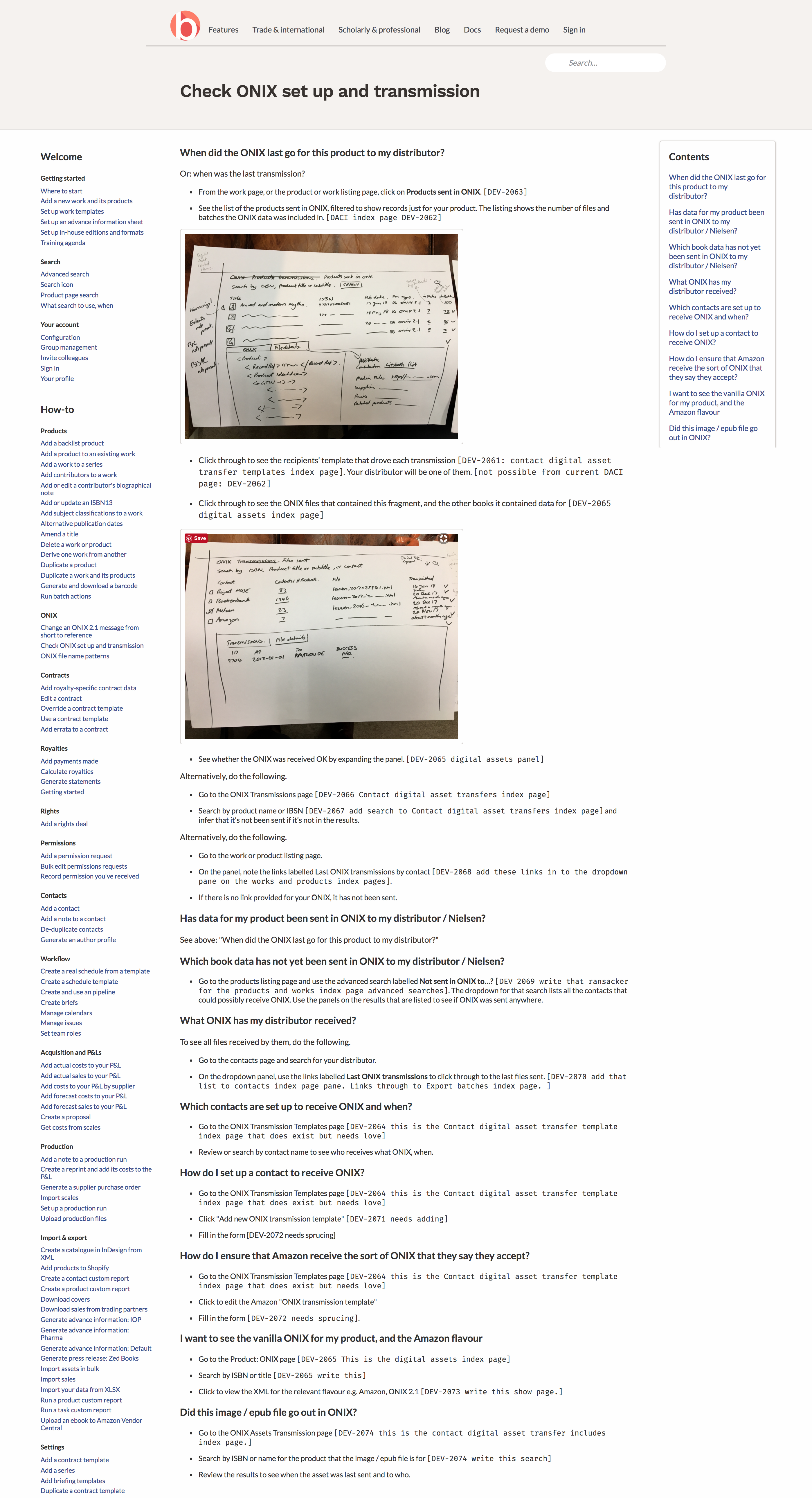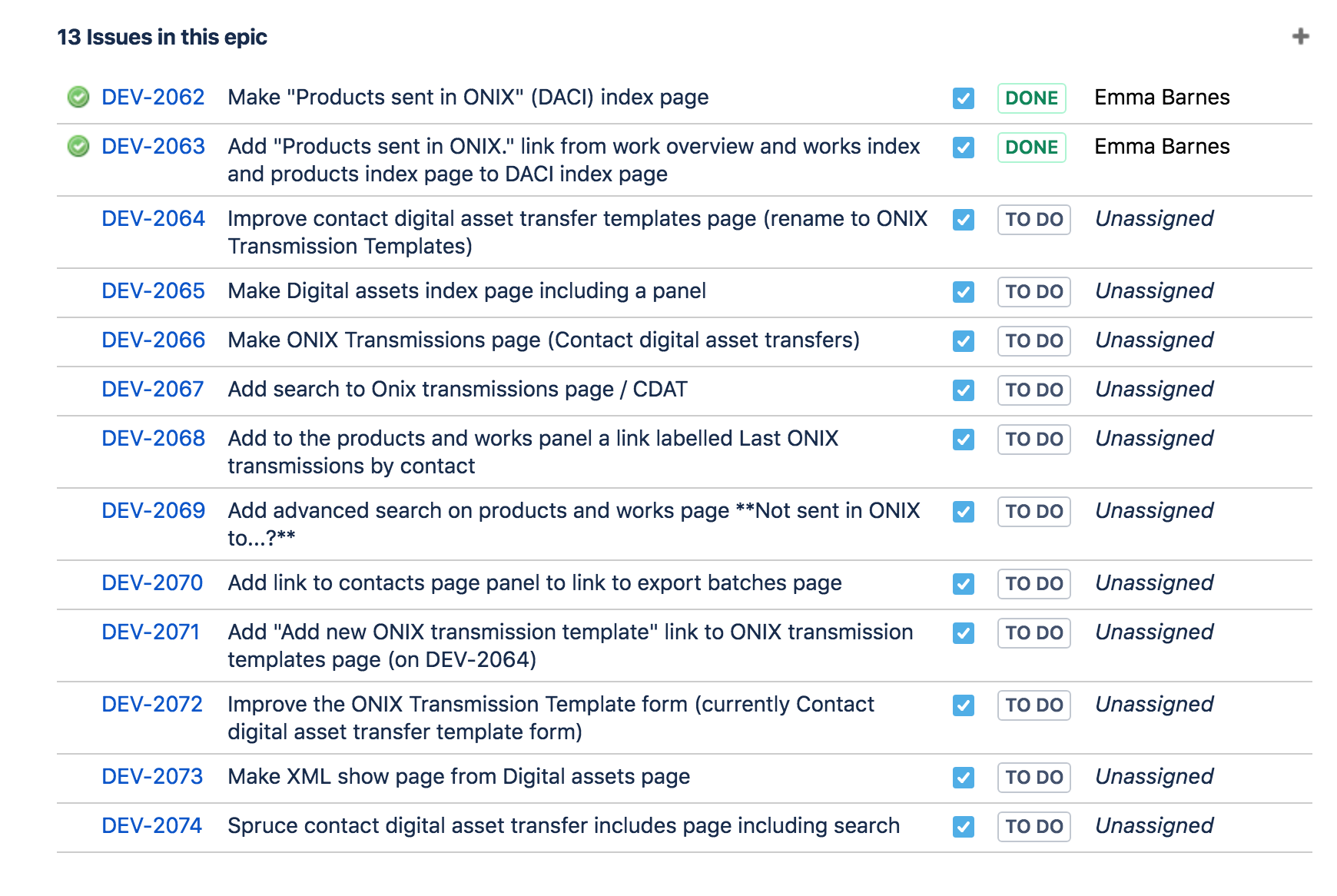There’s a new way of seeing your previous ONIX in Consonance. It’s called the ONIX fragments page and it looks like this.
What are ONIX fragments?
ONIX fragments are pieces of XML which contain a single product’s data at one particular point in time. Here is a small ONIX fragment, with very little data because the book was cancelled.

ONIX fragments are the building blocks of an ONIX message. An ONIX message is the large file that gets sent to data recipients from Consonance, and it contains lots of ONIX fragments: one per product.
Click on the row on the ONIX fragments page to see an example of your own data.
The reason for this new page
This new page came about because we field many sensible questions from clients about their ONIX:
- When did the ONIX last go for this product to my distributor?
- Has data for my product been sent in ONIX to my distributor / Nielsen / etc?
- Which book data has not yet been sent in ONIX to my distributor / Nielsen / etc?
- What ONIX has my distributor received?
- Which contacts are set up to receive ONIX and when?
- How do I set up a contact to receive ONIX?
- How do I ensure that Amazon receive the sort of ONIX that they say they accept?
- I want to see the vanilla ONIX for my product, and the Amazon flavour
- Did this image / epub file go out in ONIX?
We wanted to make answering these questions more intuitive, to save our clients’ time so they don’t have to ask, and to save our time so we don’t have to answer.
The project
This new page is the first of quite a few which are still in development. Here’s how the project has gone so far.
The first stage was to brainstorm and review all the questions we’ve received over the last year or so, which is how we came up with that list of questions. The project, we knew, needed to allow clients to get answers to these frequently asked questions.
The approach
We don’t usually do this, but this time we decided to try Documentation Driven Development, which I think we’ve made up, but it might be an actual software development approach.
Here’s how our (currently unpublished) documentation page looks like for these new features.

The idea here is that the docs are drafted, and will be gradually replaced by real screenshots.
This has proved really helpful, as a developer. If you ever write code, you’ll know that there’s a question and answer website called StackOverflow. It’s an old joke that most questions posted to StackOverflow never get posted, because the act of writing out the question answers it. We found the same in writing out formal documentation: it was a great way to check that the code we were planning to develop was going to answer real user questions, in an explainable way.
You’ll also see some ticket numbers and developer notes in those docs.

These relate to our JIRA project management board. The ONIX
epic looks like this.

Next steps
We have another eleven tickets’ worth of development to do before this piece of work is complete. But you can see that the work we’re doing is customer-question led, and so will hopefully be a helpful addition to Consonance which will save us all time and effort.
Update, some weeks later!
All these tickets are now complete so now you can track an ONIX file from soup to nuts in Consonance.
Are your current systems sabotaging your growth ambitions? Are you hungry to implement new business models, but concerned you lack the strong administrative foundations needed for innovation?
We're always amazed at how resigned publishers have had to become to the low bar in publishing management systems. Demand more.
Contact us via our contact form, or email us.